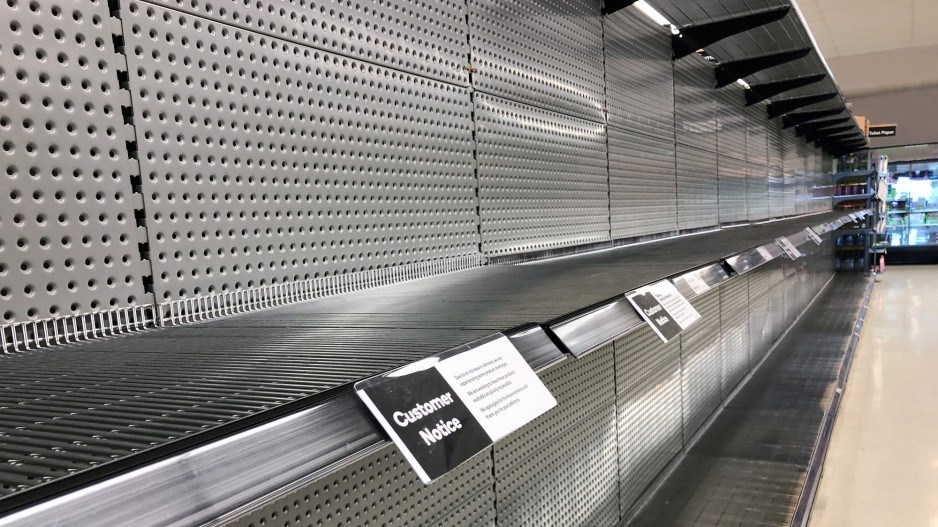Might the pandemic offer clues to the state of sa国际传媒 supply chains following the extreme rainfall that has battered the province?
Social media posts are already revealing images of bare grocery store shelves in parts of sa国际传媒 as days of punishing downpours closed highways and choked off access to communities throughout sa国际传媒 Panic-buying that subsided after the early stages of the pandemic appears to have returned to some corners of the province.
“People might overreact to what they see as potential disruptions in supply of essentials by stockpiling and so on. And while that's understandable, to some extent it also can make the situation worse,” said supply chain expert Harish Krishnan, a professor of operations and logistics at the Sauder School of Business at UBC.
He said extreme weather events are only expected to grow in number due to climate change. That trend has the potential to create more disruptions in supply chains moving forward.
“Supply chains are generally well prepared to deal with small weather disruptions,” Krishnan said, adding seasonal weather events are often already taken into consideration by supply chain managers.
“In this case … these are not the small, seasonal things that people expected. Some of these events are more disruptive than in the past due to climate change.”
January data from the Insurance Bureau of sa国际传媒 reveals $2 billion was paid out last year in insured damage caused by severe weather compared with an annual average of $600 million from 2000-10.
Meanwhile, the trucking industry will be forced to get creative in the immediate aftermath of the mass rainstorms, according to BC Trucking Association president and CEO Dave Earle.
“The message I’ve been delivering to everyone – and it’s an important message – is to calm down. You are still going to get your toilet paper; let’s not repeat what we did in 2020. Your goods will still get there. It may take a little longer, and it may have to take a different way to get to where it needs to go. It may also be a little more expensive. But it’s OK, because it will get there,” he said.
But Earle added there are valid concerns about sa国际传媒 and Canadian producers getting their goods to market amid the extensive highway closures.
“There will be some solutions. It will be more costly and it will take more time. It’s not going to be as efficient and that’s the concern when we are talking about an already strained supply chain,” he said.
Meanwhile, Krishnan said the pandemic showed supply chains are generally good at adapting to significant disruptions within a relatively short timeframe.
“The pandemic was unusual in that it was a different kind of shock to the supply chain,” he said, noting supply chain managers had spent the previous decade concerned about disruptions caused by trade wars, political events and weather.
Instead, the pandemic brought about supply chain issues caused by demand greatly exceeding supply as people began hoarding toilet paper, hand sanitizer and food, while lockdowns also disrupted access to labour.
“Global supply chains are vulnerable to disruptions and shocks, and the pandemic highlighted that,” Krishnan said.
“I do think it did show the resilience and the ability for supply chains to adapt but I think it also pointed to the fact that over time, supply chains are going to be redesigned to be potentially more regional and less global.”
With files from Chuck Chiang


